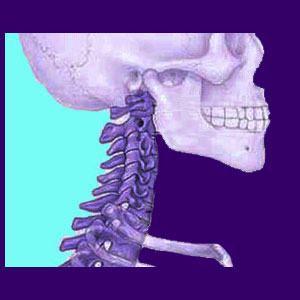
Spondylosis is a technical name for degenerative joint disease, spinal arthritis or osteoarthritis in the back. It is a degenerative condition of the spinal bones and joints, mostly caused by aging.
The various names of the arthritic processes can be very confusing to patients. This is a common problem in the medical sector, where diagnostic terminology varies greatly depending on such subjective factors as the preference of the physician. We often see this nomenclature confusion with disc pathologies, as well. It is time for standardization of diagnostic terms with clear meanings and defined parameters.
Spinal arthritis is a normal and expected part of life and does not cause any symptoms in many people who have it. Minor symptoms may require home-based care such as OTC medications, heat or exercise. If you are among the minority who suffer moderate to severe symptoms, then some form of professional symptomatic treatment might be necessary to provide increased ability to cope with the pain.
It must be noted that there is no cure for osteoarthritis and any doctor who promises to cure your condition is either greatly deluded or simply lying. The best they can hope to achieve is alleviation of the symptomatic expressions of the disorder.
This discussion focuses on the various therapy options used to treat common spinal arthritic conditions, often diagnosed as spondylosis.
Treatments for Spondylosis
The following are some of the most common treatment options used to battle osteoarthritic changes in the spine. None of the methods will provide cures, but most will provide some form of symptom relief:
Chiropractic can help to maintain flexibility and range of motion. Regular spinal adjustments may be able to prevent large bone spurs from occurring on treated areas, but this is not a proven fact.
Acupuncture is an all-natural pain reliever. No structural changes will be enacted in the spine, but pain messages may be intercepted before they can register. There are few risks, so this is a great substitute for pharmaceutical therapy.
Epidural injections can block severe pain for extended periods of time. There are many different types of epidurals with different goals in mind. Nerve blocks statistically show the best results for arthritic conditions.
Pain management drugs are the industry standard of care for virtually all back and neck pain syndromes. This is the easiest way for your doctor to earn lots of money, both due to ease of treatment (write a script) and the financial incentives offered by the large drug companies. While drugs can be effective for arthritis pain, they come with the potential for serious side effects and can cause significant health issues, especially when used long-term.
Heat or ice are both wonderful for arthritis. Each patient will have a different response to cold or hot, so experimentation is crucial for best results. Cold gel packs work great and are reusable. Wet heat is preferred and a hot, moist towel is ideal.
Massage is relaxing and beneficial for some types of arthritic pain.
Physical therapy is highly recommended to preserve normal mobility and functionality. The exercise program will have to basically be maintained continually for benefits to endure. This can be costly if a therapist or fitness trainer is needed, but most patients can eventually work by themselves on a maintenance program.
Knowledge therapy is perfect to overcome the emotional and psychological causes and contributors to the expression. Remember that the mind and body work together to cause and cure all health issues.
Glucosamine and chondroitin are nutritional supplements which may help to rebuild damage caused by arthritic degeneration. These substances can be costly and are not proven to relieve any pain immediately or eventually.
Surgery for Spondylosis
Back surgery should always be a final option for arthritis treatment. Surgery to correct spinal arthritis is usually a very invasive procedure and is grueling to endure. Surgery is usually performed if there is significant evidence of a pinched nerve, or central spinal stenosis, caused by bone spur formation or general arthritic debris.
Risks are considerable with surgical treatments and results will always be temporary, since the arthritic processes develop day by day and will continue even after the most drastic surgery. Common procedures used to correct spondylosis include: foraminotomy, laminectomy and spinal fusion.
Spinal Arthritis Treatment Tips
Rule #1, stop worrying about spinal arthritis so much. You can not stop or prevent aging. However, you may be able to stop and prevent the occurrence of pain and other symptoms. Relax and do not obsess over your arthritic neck or back pain. If you do, I can guarantee that it will get worse.
If you have some minor pain, that’s ok. Try some conservative and relatively safe treatment options. Stay with natural and holistic treatments as much as possible. If you need medicine, try to stick to over-the-counter varieties. Some prescription medicines have harmful side effects and can be highly addictive. The only thing worse than a cranky spinal arthritis patient is a drug-addicted cranky arthritis patient. Please, use common sense.
Allow spinal arthritis to occupy the same space in your mind as gray hair and wrinkles. You don’t like them. They remind you that you are getting older. But, they are not inherently harmful, just par for the course. Hmmm, par for the course… That gives me a great idea for a new article which should be of interest to many arthritis patients whose game has suffered from aging: Golf and Back Pain.





